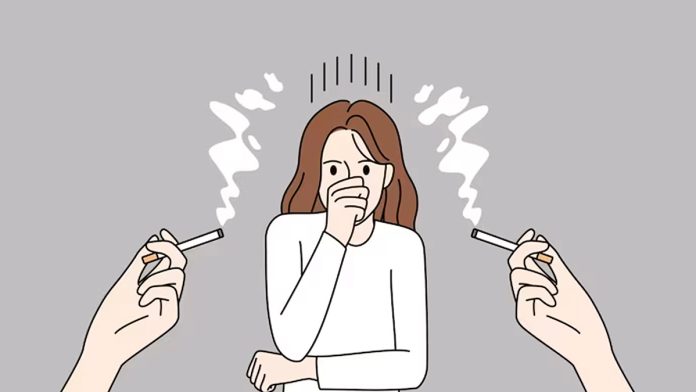When you see someone light up a cigarette, you might think the danger is only for the smoker. But that’s not the case.
The smoke that drifts from the burning end of a cigarette and the exhaled smoke from a smoker can be just as harmful to those around them.
This is called secondhand smoke, and it’s a silent killer that affects millions of people worldwide, especially in countries like Nigeria.
What is secondhand smoke?
Secondhand smoke is a mixture of the smoke from the burning end of a tobacco product and the smoke exhaled by smokers. It contains over 4,000 chemicals, many of which are toxic or can cause cancer. Even if you can’t see or smell it, these harmful substances are still in the air.
Dangers of passive smoking
According to the World Health Organization (WHO), tobacco consumption is one of the major public health threats globally. In Africa alone, 146,000 people die annually from tobacco-related diseases including cancer, heart diseases, and lung diseases.
People who regularly breathe in secondhand smoke face many of the same health risks as smokers, including lung cancer and heart disease. For pregnant women, exposure to secondhand smoke can lead to premature birth and low birth weight babies.
Children: The most vulnerable victims
Children are particularly susceptible to the dangers of secondhand smoke. Their bodies are still developing, and their lungs are smaller. Kids exposed to secondhand smoke are at higher risk of:
• Asthma
• Chest infections
• Ear infections
• Coughs and colds
In many countries, it’s now illegal to smoke in a car with children present, recognizing the heightened danger in small, enclosed spaces.
Protecting against secondhand smoke
The best protection against secondhand smoke is to create a completely smoke-free environment. This means:
• No smoking inside the home or car
• Asking visitors to smoke outside
• Avoiding places where smoking is allowed
It’s important to note that opening windows or smoking in a different room doesn’t effectively protect others from secondhand smoke.
A smoker’s journey to quitting
Ernest Ajayi, a 45-year-old civil servant from Abuja, Nigeria, smoked for over 20 years. He started in his early twenties, influenced by movies that portrayed smoking as glamorous. Despite health warnings on cigarette packs, Ajayi continued smoking up to 20 cigarettes a day.
His turning point came in October 2020 when he fell seriously ill. Seeing images of smokers’ lungs shocked him into quitting. Since then, Ajayi has noticed significant improvements in his health, including better sleep and blood pressure.
Ajayi’s advice for those wanting to quit is to find a substitute for smoking moments. “When you are triggered to have a cigarette, do something else straight away for 20 minutes,” he suggests.
Efforts to curb tobacco use
Nigeria has been taking steps to address tobacco use. In 2018, the WHO and European Respiratory Society supported the Federal Ministry of Health to implement a pilot project on brief tobacco interventions in selected health facilities.
In 2021, Nigeria began implementing Graphic Health Warnings on cigarette packs and was identified for support to set up a National Tobacco Quit Center. There’s also a campaign called #SmokeFreeNollywood that advocates for banning tobacco use in Nigerian films.
However, a study by Desalu et al. highlighted a concerning lack of knowledge about smoking cessation among Nigerian physicians. About 70% of the physicians reported that tobacco education in medical school was inadequate. This underscores the need for better education about the dangers of smoking and secondhand smoke, even among healthcare professionals.
The bottom line
Secondhand smoke is a serious health risk that affects smokers and non-smokers alike. By understanding its dangers and taking steps to create smoke-free environments, we can protect ourselves and our loved ones.
If you’re a smoker, quitting is the best thing you can do for your health and the health of those around you. Remember, it’s never too late to stop, and help is available if you need it.


